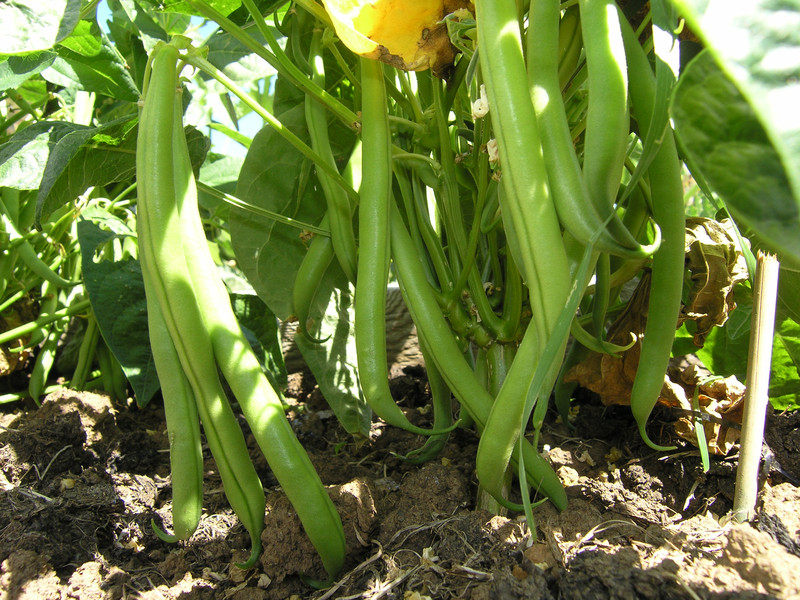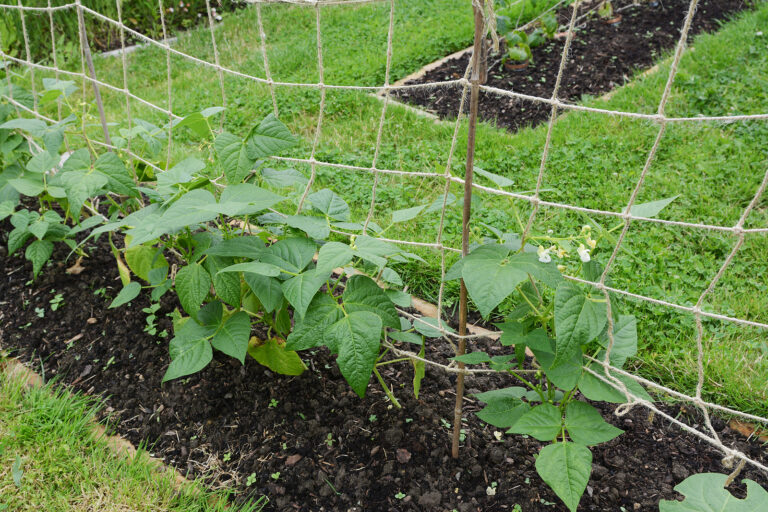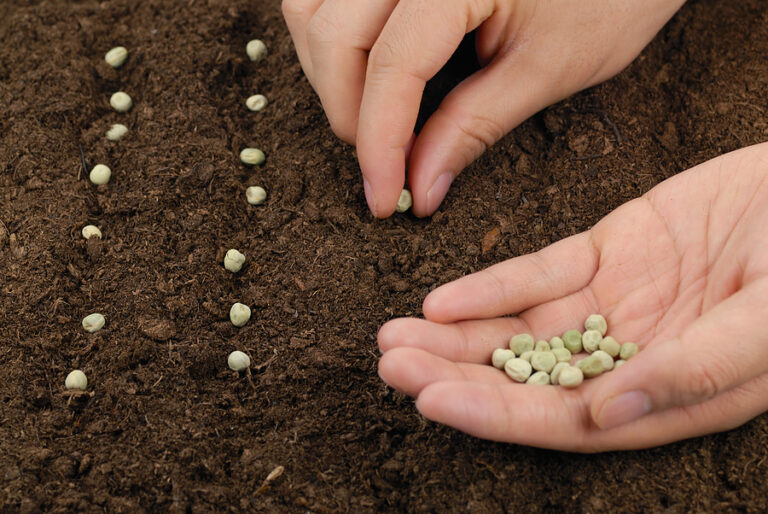Snap Bean Varieties: Which One Should You Grow?
Over the years, I’ve grown a wide range of snap beans in my home garden, testing different varieties to see which ones produce the best yields, resist pests, and have the best flavor. Whether you’re looking for a classic green bean, a vibrant purple variety, or a tender French-style bean, there’s a snap bean to fit your needs.
In this guide, I’ll share some of the best heirloom and hybrid snap bean varieties for home gardeners, along with their growing characteristics and ideal uses. Some beans are best eaten fresh as tender pods, while others can be left to mature and used as shell beans or dried beans for winter storage.
Choosing the right snap bean variety depends on your garden space, climate, and how you plan to use your harvest. Some varieties thrive in cooler temperatures, while others are heat-tolerant and produce well into the summer. I’ll also include notes on disease resistance, productivity, and my personal experiences with each variety to help you select the best beans for your garden.
Let’s dive into the top snap bean varieties, from heirlooms with deep historical roots to modern hybrids bred for high yields and disease resistance.
- How to Plant and Grow Snap Beans for a Productive Harvest
- A Guide to Growing Snap Beans in Containers
- Types of Beans for Home Gardens
- Snap Bean Seed Starting Tips
- Snap Bean Varieties: Which One Should You Grow?
- Harvesting, Storing, and Cooking Snap Beans: A Gardener’s Guide
- The Ultimate Guide to Growing Beans: From Planting to Harvest
- Common Bean Pests and Diseases: What Every Gardener Should Know
Heirloom Snap Bean Varieties
Pods on bush beans come to harvest over a two-week period. Stagger the planting of bush varieties for a continuous harvest. Pole bean varieties will produce for a month or more.
- ‘Kentucky Wonder’: an heirloom pole bean variety that produces 8-inch long pods on 6- to 8-foot (1.8-2.4m) long vines.
- ‘Bountiful’: bush bean to plant for those extra early summer harvests and also late summer plantings for harvest before the first fall frost.
- ‘Bush Blue Lake’: bush plants with heavy yields of flavorful pods that are tender and crisp.
- ‘Fortex’: “filet” beans with dark green, extra slender 7-inch (17cm) pods.
More snap bean varieties
- ‘Black Valentine’: black pods to 6 inches long, heirloom (from 1897), does well in cool soil; 50 to 70 days to harvest.
- ‘Blue Lagoon’: sweet, tender, dark green pods to 6 inches; 56 days to harvest.
- ‘Blue Lake 274′: long round, dark green pods, 5 to 6 inches long, 18-inch tall plants; 52-60 days to harvest.
- ‘Contender’: plump, curved pods, 5 to 7 inches, bushy plant, tolerates heat; 40 to 58 days to harvest.
- ‘Derby’: AAS Selection, tender, 7-inch green pods; 55 days to harvest.
- ‘Earli-Serve’: straight, tender, 4-inch pods, pick when young; 45 days to harvest.
- ‘Florence’: straight, tender, 6 ½ inch pods, disease resistant; 50 days to harvest.
- ‘Goldcrop’: shiny, yellow 5 to 6 inches, stringless pods; 45 days to harvest.
- ‘Goldkist’: long slender, golden-yellow pods, harvest when young; 59 days to harvest.
- ‘Nickel’: dark green, stringless pod to 4½ inches; 52 days to harvest.
- ‘Provider’: medium green, fleshy pods to 5 inches, dependable early; 50 days to harvest.
- ‘Roc d’Or’: yellow wax bean, long, straight round pods, buttery flavor; 57 days to harvest.
- ‘Roma II’: Italian green bean produces flat, flavorful 4 ½ inch pods, big yields; 59 days to harvest.
- ‘Royal Burgundy’: curved, round purple pods, 12 to 15 inches, bush, turns green when cooked; 50-60 days to harvest.
- ‘Royalty Purple Pod’: tolerates cool soil and partial shade, 4 to 6-inch pods; 52 days to harvest.
- ‘Slenderette’: dark green, slender, 5-inch pods, erect bushes; 53 days to harvest.
- ‘Venture’: long green, curved, lumpy pods, 5 to 6 ½ inches, easy to grow; 48 days to harvest.
Beyond Green: Snap Beans in a Rainbow of Colors
When most people think of snap beans, they picture the classic green variety. But if you’ve ever grown beans yourself, you know they come in a dazzling array of colors—golden yellow, deep purple, and even bi-colored streaks. Over the years, I’ve planted everything from tender green bush beans to striking purple pole beans that turn green when cooked.
Yellow snap beans, often called wax beans, have a smooth, mild flavor and a beautiful golden hue that brightens any plate. Purple snap beans bring a vibrant pop of color to the garden, making them easy to spot when harvesting. And then there are pole beans, which climb skyward and produce long, flavorful pods in shades of green, yellow, and purple.
No matter which type you grow, snap beans are incredibly versatile—perfect for fresh eating, steaming, sautéing, or even pickling. Below, I’ve put together a list of some of the best varieties for home gardeners, organized by color and growth habit. Whether you’re looking for a high-yielding bush bean or a towering pole bean for vertical gardening, there’s a perfect variety to fit your space and taste.
- Green or snap bush beans: ‘Astro’ (53 days); ‘Blue Lake’ (56 days); ‘Contender’ (53 day); ‘Derby’ (55 days); ‘Gator Green’ (55 days); ‘Greensleeves’ (56 days); ‘Provider’ (53 days); ‘Slenderette’ (53 days); ‘Tendercrop’ (53 days); ‘Tendergreen’ (57 days); ‘Tendercrop’ (53 days); ‘Triumph’ (52 days); ‘White-Seeded Provider’ (50 days).
- Yellow wax bush beans: ‘Brittle Wax’ (55 days); ‘Cherokee’ (55 days); ‘Earlywax Golden Yellow’ (50 days); ‘Goldcrop’ (50 days); ‘Gold Mine’ (47 days); ‘Gold Rush’ (54 days); ‘Kinghorn’ (50 days); ‘Pencil Rod’ (52 days); ‘Sunrae’ (55 days); ‘Wax Romano’ (59 days).
- Purple bush beans: ‘Purple Queen’ (55 days).
- Green pole green or snap beans: ‘Blue Lake Pole’ (65 days); ‘Kentucky Wonder’ (60 days); ‘McCaslan’ (65 days); ‘Northeaster’ (60 days); ‘Scarlet Emperor’ (100 days); ‘Scarlett Runner’ (65 days); ‘Yard Long Beans’ (80 days).
- Yellow and purple pole snap beans: ‘Cascade Giant’ (60 days); ‘Kentucky Wonder Wax’ (65 days); ‘Purple Pole’ (65 days) ‘Yellow Annelino’ (60 days).
Beyond Snap Beans: More Varieties to Grow in Your Garden
While snap beans are a garden favorite, there are plenty of other bean varieties worth growing, each with unique flavors, textures, and uses. Some beans are best enjoyed fresh as shell beans, while others are left to dry on the vine for winter storage. If you have space in your garden, trying a mix of these beans can provide a diverse and rewarding harvest.
Over the years, I’ve experimented with many of these varieties, from creamy lima beans to nutty chickpeas and richly flavored runner beans. Some require longer growing seasons, while others thrive even in shorter, cooler summers. Whether you’re looking to expand your bean patch or simply curious about the different types available, here are some excellent choices to consider.
Here are other bean varieties that can be grown in your bean patch:
- Shell beans: ‘Borlotto’. ‘Chevrier’, ‘French Horticulture Bean’.
- Dry beans: ‘Great Northern White’, ‘Jacob’s Cattle’, ‘Vermont Cranberry’.
- Lima beans: ‘Fordhook 242’, ‘Henderson Bush’, ‘King of the Garden’.
- Fava bean: ‘Broad Windsor’, ‘Aguadulce’, ‘Con Amore’, ‘Loretta’, ‘Sweet Lorraine’, ‘Windsor Long Pod’.
- Chickpea: ‘Chickpea’, ‘Garbanzo’, ‘Gram’, ‘Kabuli Black’.
- Cowpea (Black-eyed pea): ‘California Blackeye #5’, ‘Dixie Lee’, ‘Elite’, ‘Mississippi Purple Crowder’.
- Kidney bean (variety of common bean): ‘Borlotti’, ‘Caparron’, ‘Cranberry’, ‘Yin Yang’, red and white kidney beans are also called cannellini beans.
- Runner bean: ‘Scarlet’, ‘Scarlet Emperor’, ‘Ousidepride’.
- Soybean: ‘Early Hakucho’, ‘Envy’.
About Snap Beans
- Common names for green beans include green bean, snap bean, string bean, French bean, wax bean, pole bean, bush bean, stringless bean
- Botanical name: Phaseolus vulgaris
- Origin: South Mexico, Central America
- Snap beans are eaten as a green pod.
- Pole beans climb, but can also be snap beans.
- Shelly beans are beans that have begun to mature–the green maturing seeds are harvested young and cooked like fresh peas.
- Dry beans have matured and dried in the pod and are soaked before cooking.
- Wax beans are any bean pods that ripen yellow.
- String beans are eaten in the pod–beans in pods once commonly had strong stringy tissue where the two halves of the pod came together. (Today most string beans are actually stringless.)
- Lima beans are flat and oblong and are also called “butter beans”; they grow best in warm regions. Fava beans–also called “broad” or “horse” beans–look like fuzzy lima beans but grow best in cool regions.
- Runner beans are not common garden beans or lima beans; runner beans are not pole beans–but they are climbers. Runner beans are their own species and to prove it they wrap themselves counter-clockwise around poles or stakes.
- Beans are second only to tomatoes in popularity among home vegetable gardeners.
Related articles:
How to Plant and Grow Snap Beans
How to Harvest and Store Snap Beans
Bean Growing Problems: Troubleshooting
Five Ways to Quick Cook and Serve Snap Beans
How to Can Green Snap Beans for Beginners
Cooking and Serving Yard-Long Beans
How to Grow Plant, Grow, and Harvest Chickpeas and Garbanzo Beans
How to Cook and Serve Chickpeas
How to Plant and Grow Lima Beans
How to Plant, Grow, and Harvest Broad Beans and Fava Beans
Five Ways to Cook and Serve Fava Beans
All About Dried Beans – Growing and Cooking
Container Growing Beans – Plant, Grow, and Harvest Tips
Garden Planning Books at Amazon:



